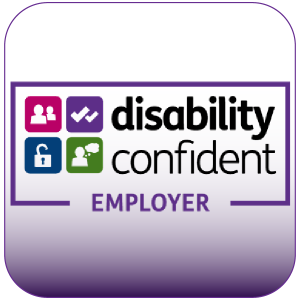It can’t be denied that technology has, on the whole, made our lives easier – whether we like to admit it or not. Having all of the information you’ll need accessible via a phone that fits in the palm of your hand and possessing greater connectivity options with potential consumers, businesses and potential new hires has changed things significantly. However, sometimes things go a bit too far, for example, does anyone really need a fridge that’s connected to the internet? The same concept applies in recruitment, your organisation needs to use technology, but in a way that’s right for you. The latest edition of the Resourcing and Talent Planning Report – produced by the CIPD in conjunction with Omni RMS – revealed amongst many other findings how over 1000+ HR professionals and their organisations use technology, and highlighted some best practice examples for employers to be aware of.
Uptake on the rise
Firstly, it’s clear that technology is significantly increasing accessibility, and improving candidates’ broader application and recruitment experience as a result. Programmes like Teams or Zoom open up significantly more barriers to entry than ever possible when face-to-face recruitment was the dominant option, and organisations are reaping the rewards by having access to more diverse talent pools. Nearly three-quarters of employers reported a larger, more diverse candidate pool from using technology and half found that their use of automated systems has enabled them to screen out unsuitable candidates to a greater extent than before, up from 40% last year.
80% of respondents reported that their use of recruitment tech had increased as a consequence of the COVID-19 pandemic, with a sizeable group of employers using online induction processes, online tests and assessments and/or applicant tracking systems. AI and machine learning is also growing in popularity with 16% of employers using automated systems to engage with people. There is a broader rise in organisations reporting that technology has improved the candidate experience (up 10% to 78% from last year) and sped up the hiring process (72%, up from 64% in 2021).
Striking a balance
Another key finding is that the balance between technology and human interaction in the recruitment process is key. If you veer too far to becoming entirely automated then it pushes candidates away and disengages them. Similarly, if the process is being held up by human error and taking longer than it should, the potential new hire is equally likely to not want to work for you. Striking this balance, and ensuring the recruitment technology adopted by your organisation meets your needs, and isn’t simply a one-size-fits-all option, is of paramount importance.
When it comes to what’s holding firms back from adopting the technology and processes that they would like, there’s one clear factor; a lack of resources, skills and knowledge. This suggests that employers should assess their IT capabilities, both in terms of access and integration of software and tech skills themselves, and then upskill staff and invest accordingly. Hiring teams should look to develop business cases around the adoption of technology to free up their employees to focus on value-adding activities. It’s clear that amongst the survey respondents, exploring technology that benefits and engages with the audience and creating a bespoke and smoother candidate experience, has resulted in them being able to attract better people, and to retain them post job offer.
Two-way feedback
Making the hiring process a two-way one is also critical; ask candidates and hiring managers for feedback and then act on that information. Providing comments to both successful and unsuccessful interviewees means that they can adapt and you can learn from their experiences. A good way of understanding the processes your candidates are facing is to apply for some of your own vacancies or explore your employee value proposition (EVP) from a prospective hire’s perspective, which will enable you to identify any blockers.
There’s a lot more depth to recruitment technology and its potential uses than ever before, but as always, it’s important to think holistically about your workforce, including permanent versus contingent, along with recruitment, development, upskilling and retention strategies. Also consider how technology and data can help with the development of proactive strategies to attract the people you need.
While uptake of different forms of recruitment tech is growing, there is clearly scope for greater use of different new processes. Use of technology for interviews remains most common as outlined in our report with the CIPD, however the uptake is predominantly among larger employers with greater scope for investment in these sorts of processes among SMEs. It should be remembered that the additional challenges of recruiting in a tight labour market can increase costs, although these may be offset by the use of technology or changes in the hiring methods used.
Of course, it’s not realistic for every employer to leverage technology to its full extent, however using it in the right way can have clear benefits in both your ability to recruit talent, but also in improving their interviewing and overall hiring experience. To find out more about the role of technology in recruitment, and to access your copy of the Resourcing and Talent Planning Report 2022, click here.




